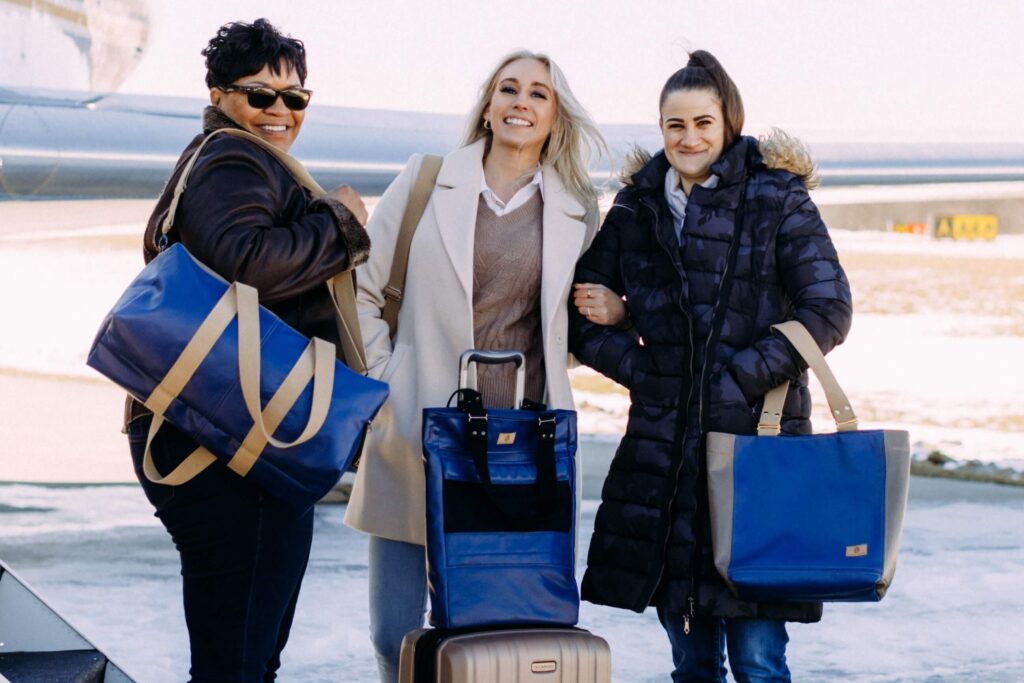What can you do with thousands of kilos of leather from old airline seats? And how can you make new leather seat covers more sustainable?
Southwest Airlines’ (LUV) Repurpose with Purpose sustainability initiative aims to tackle exactly those questions. The initiative partners with social impact organizations to transform the leather into new products, such as soccer balls, shoes, bags, craft kits and even jewelry.
It was when Southwest Airlines (LUV) was carrying out a seat overhaul that it started looking for a better way to use the old leather, rather than consign it to scrap heap or the incinerator. An employee suggested the airline look for organizations in Kenya that could use the leather and the Repurpose with Purpose scheme was born in 2014.
Since then, the ultra-low-cost carrier has donated more than 1.4 million pounds of leather seat covers. In 2021 alone, the airline repurposed 144,000lbs of leather. With another 269 planes scheduled to be overhauled through the end of 2023, there’s a whole lot more leather that Southwest is keen to donate and see transformed into new products.
“When we knew we were going to do this seat overhaul, we just felt that we could not let this go to the landfill,” Laurie Barnett, Vice President Communications & Outreach at Southwest, told AeroTime. “I am so proud of our team and the creativity that it took to identify this way of giving new life to the leather.”
Southwest currently works with eight partners to find ways to bring new life to the old leather seat covers, teaming up with organizations that work with everyone from students to human trafficking survivors, veterans, and more.
One of the many ways that the leather is used is to provide free therapeutic craft kits to military service members and veterans in the United States who are receiving medical care. Southwest works with Arise Foundation and Help Heal Veterans to produce different types of craft kits, which can be used to make wallets, belts, footballs and bracelets, thus helping the rehabilitation process.
Another charity, Unshattered, employs women in recovery to make premium handbags and accessories. Using leather donated by Southwest, women who are overcoming addiction have created a collection of travel bags and accessories. Turnip Green Creative Reuse teaches students how to upcycle and reutilize old materials.

Unshattered’s Southwest products. Credit: Southwest
“We knew we alone could not make anything of the leather ourselves. But we have a great network of community partners,” Barnett explains. “And we understand that through leveraging them, we could not only help leather have a new life, but also help people build skills and careers and take care of their wellbeing for themselves.”
Leather offcuts
The initiative is just one of many sustainability schemes at Southwest Airlines (LUV), which is seeking to achieve carbon neutrality by 2050.
“This will take all of us working with government, non-profits, our customers, to make an impact,” Barnett said. “We take this very seriously and are looking to partner with other like-minded organizations. It’s going to take quite a bit of lift to make a shift, but these incremental things like Repurpose with Purpose that we can do now are really impactful.”
When it comes to replacing the leather seat covers, the airline has been working for over a decade with a company called ELeather, based in Peterborough, UK, which takes waste leather and creates new leather using green energy.
Barnett said that not only is the leather recycled, it’s also lighter, saving Southwest 600lbs per aircraft on a 737. And on aircraft, reducing weight means reducing fuel burn, thus saving on emissions.
AeroTime caught up with Nico den Ouden, chief commercial officer of ELeather, at the AIX Aircraft Interiors Expo in Hamburg, Germany, to find out more about their leather.
ELeather set up its first factory in 2007 and says over 200 airlines fly with its recycled leather onboard. The company takes leather offcuts, mostly from European tanneries so it can ensure full traceability, and mills them into leather fibers, which it then uses to create a type of leather fiber web. Two layers of the leather fiber web are then sandwiched with a textile core and using high pressure water jets, the leather fibers are entangled to create a consistent roll of material.
“There’s no chemicals, it’s a purely natural process,” den Ouden explains. “We basically put a hide back together.”
ELeather, which currently supplies rail and bus operators as well as airlines, is about to open its second factory in the UK and has plans to move into automotive and footwear.
“We’ve saved about 8,000 tonnes of leather waste from landfills so it’s still a drop in the ocean,” den Ouden said.
ELeather’s aim is to show that no new products need ever to be created again. “There’s an abundance of resources in the world,” den Ouden said. “Why create new stuff from virgin materials rather than using what’s around us already?”

